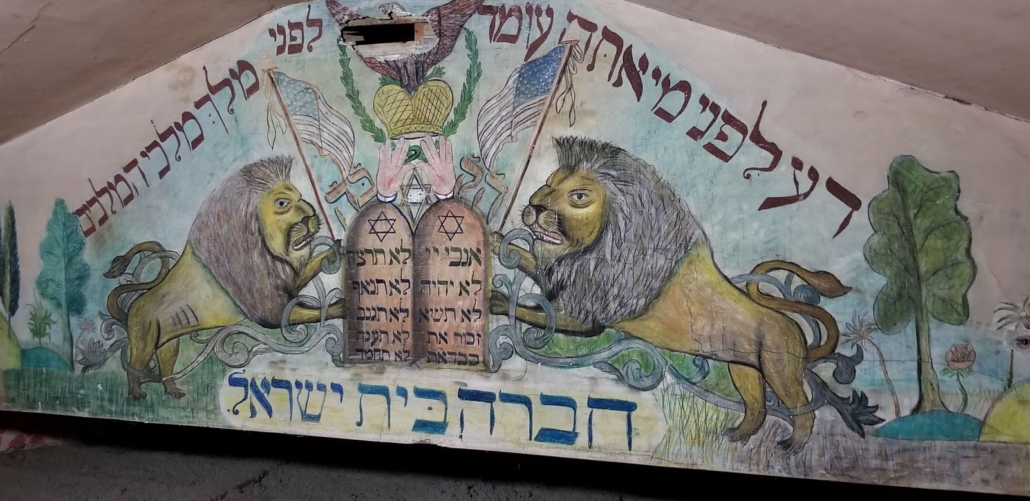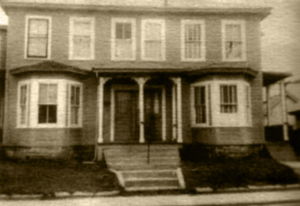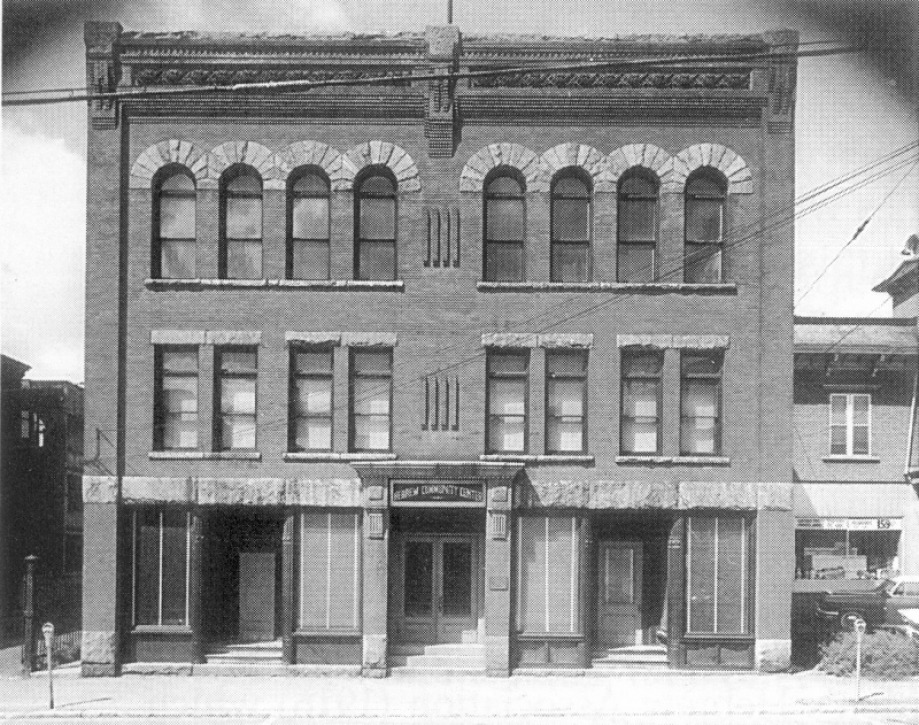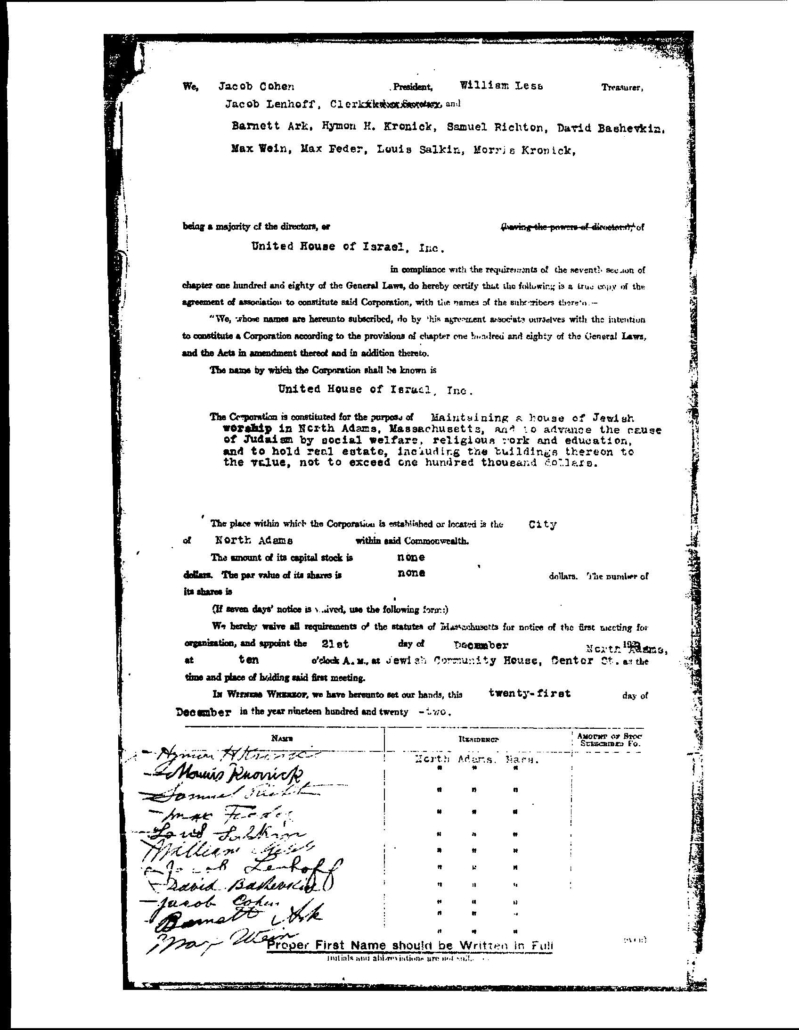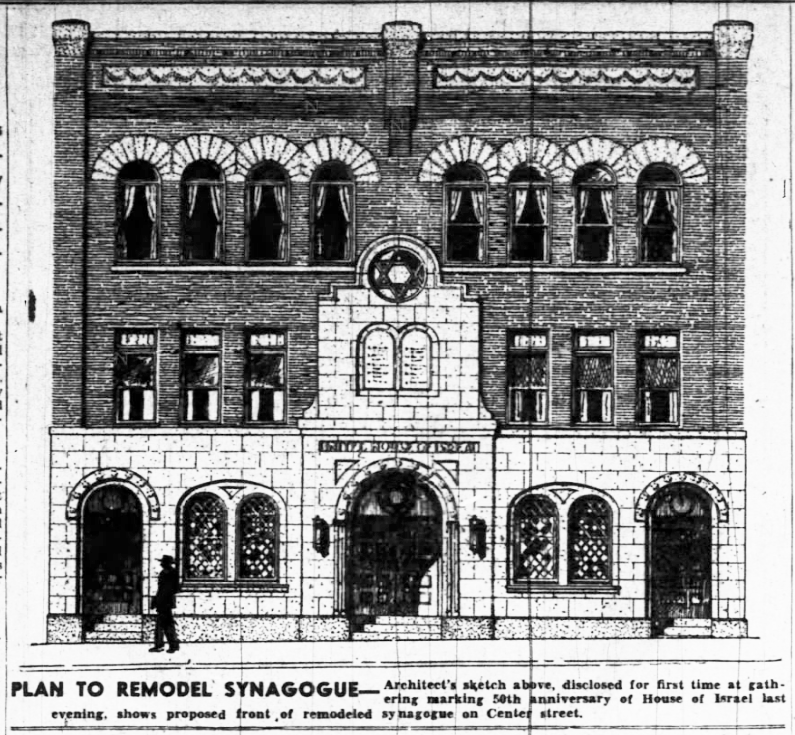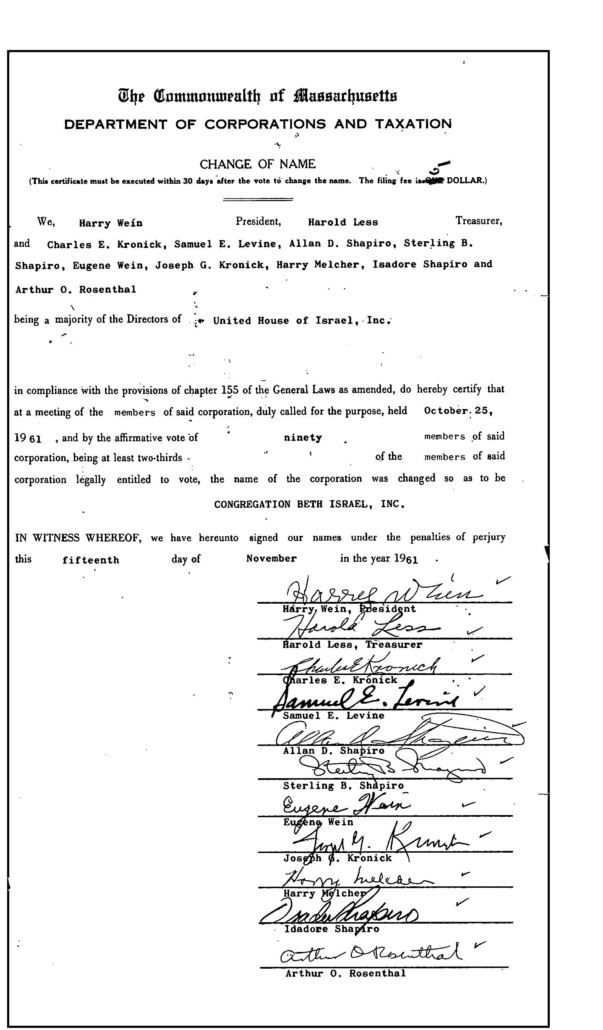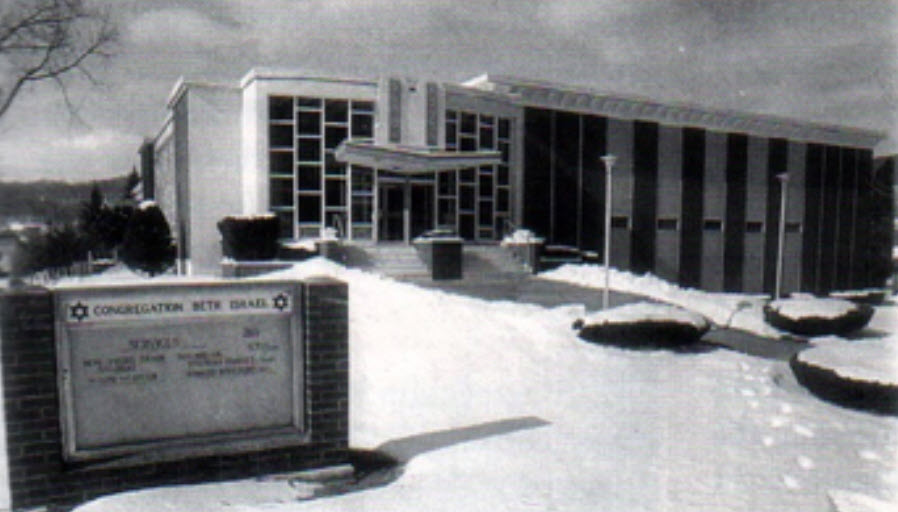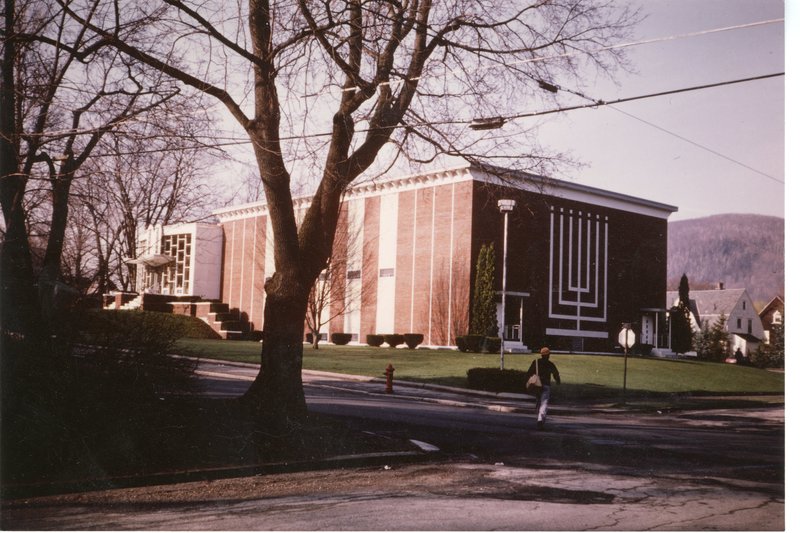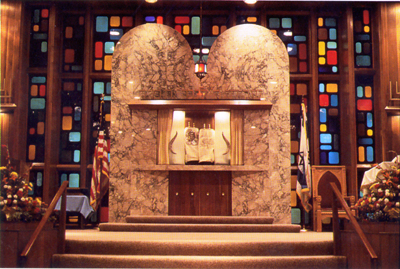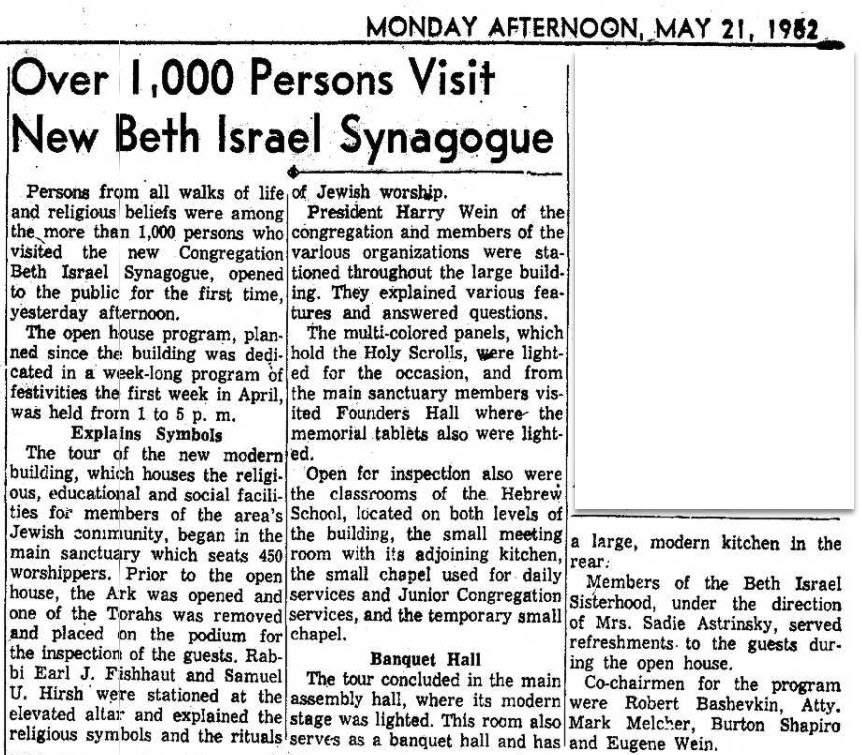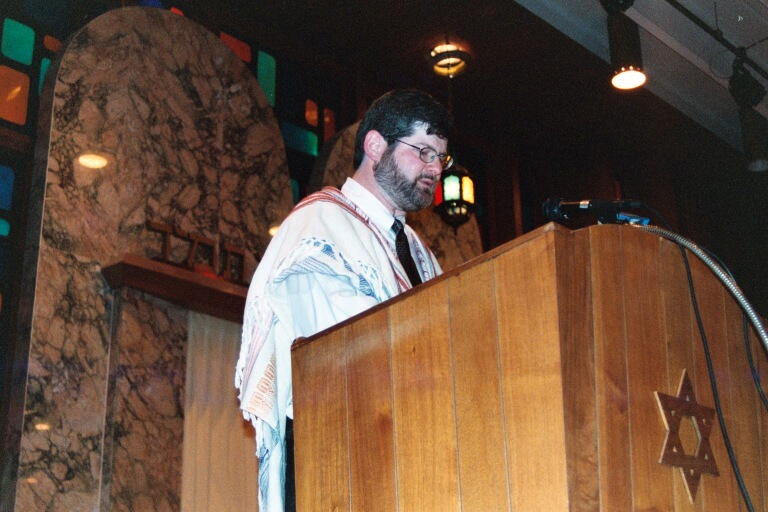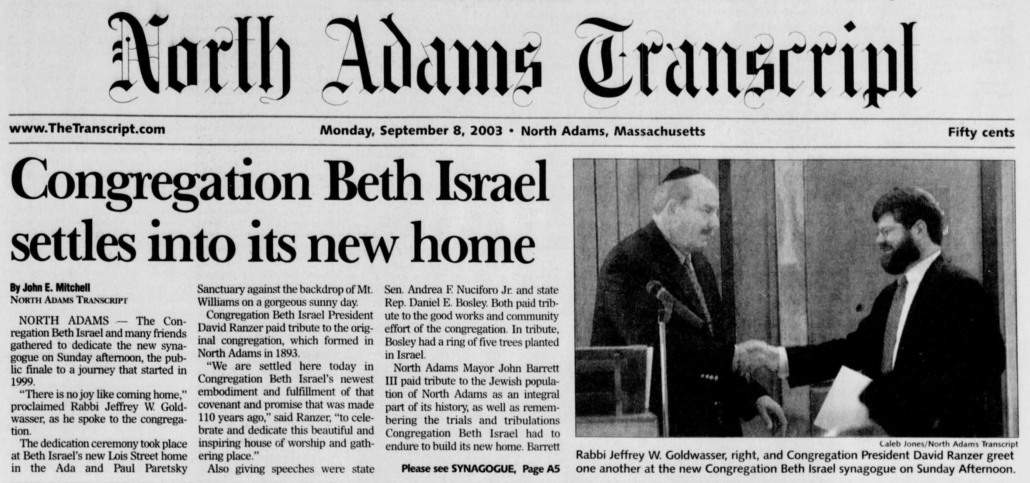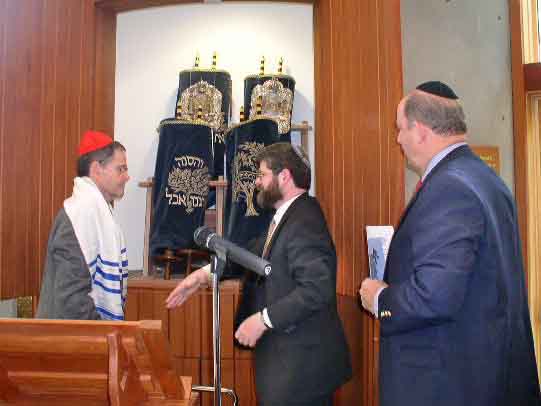By May 26, 1893, this small group felt itself sufficiently well established to purchase a plot of land on Francis Street from Emily P.Witt for $500. They took the name House of Israel and constructed North Adams’ first synagogue there. Early maps illustrate access to the synagogue by way of a passage from State Street labeled Synagogue Road.
At the same time, they engaged the Reverend Simon Ratner as Cantor-Shochet. In 1895, this group established a Chevra Kadisha which has continued its work throughout the history of the community.
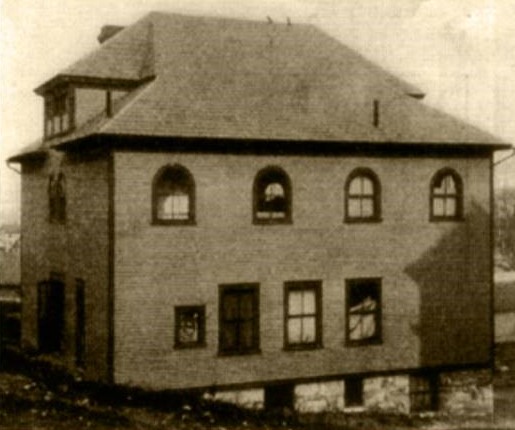
Synagogue of the United House of Israel on Francis Street, North Adams, MA. (circa 1900)
A stunning, historic mural from this original building was re-discovered in the attic of this building, now an apartment house, in 2014. It was written about extensively in Samuel Gruber’s Jewish Art & Monuments blog. He said it “seems to merge Jewish traditional art and New England folk art” and “is a large and important surviving fragment of the visual culture of turn-of-the-20th-century immigrant Jews.”
“The mural presents the Tablets of the Law flanked by two large colorful lions, which hold American flags in their front paws. The patriotic theme is continued higher up, where a seemingly American eagle with wings spread sits atop a tower of Jewish symbols: Decalogue, Star of David, priestly blessing hands, a wreath, and the Crown of Torah; all culminating in the eagle. The lions are entwined in tendrils. They spring forward from a stylized landscape that evoke Eretz Yisrael in its palm and cypress trees,” Gruber said. (The following photo is from his blog. Click on the image to see it in full size and to see other photos of this mural at his website.)
